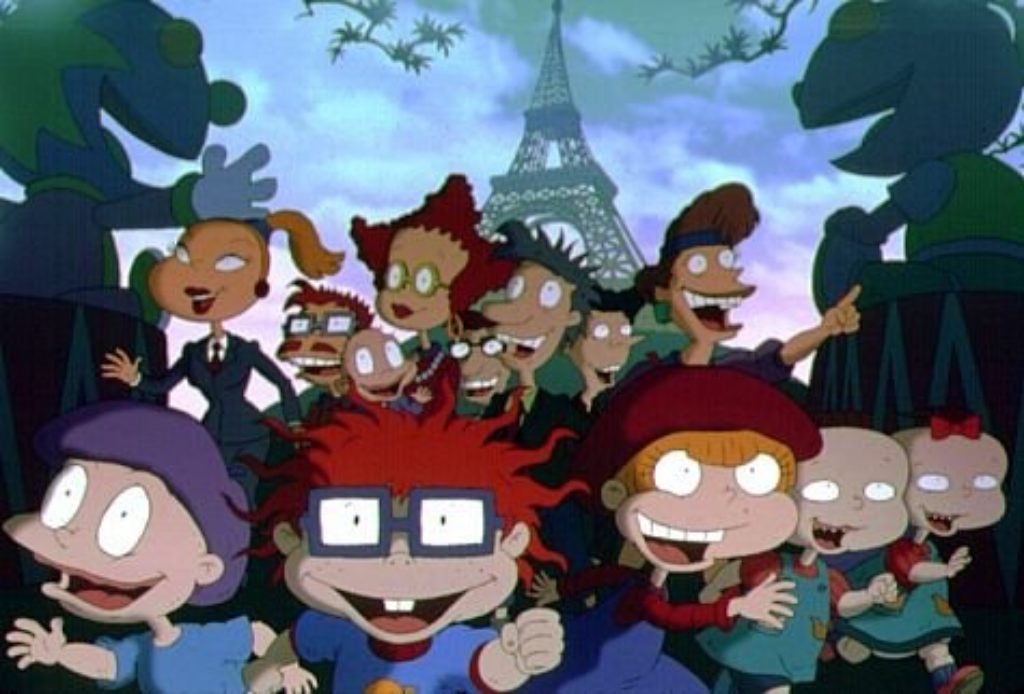
Since its premiere on Nickelodeon in 1991, Rugrats has become the highest rated show on television for kids between the ages of 2 and 11. In the second theatrical movie, the Rugrats gang heads to Paris when Stu Pickles has to go to EuroReptarland to fix the mechanical dinosaur he invented. The city of romance has its effect on the adults, especially on Chas Finster who starts dating again. His son, Chuckie, is excited about this development, because he wishes he had a new mom. Soon, Chas has not just one, but two women vying for his affections: the bombastic director of the park, Coco LaBouche, and her kind assistant, Kira Watanabe. Coco only wants to marry Chas for selfish reasons and uses her power and influence to trick him into a proposal. Kira has nobler intentions, but finds it hard to get out of Coco’s shadow.
positive elements: The qualities of a good mom are held in high regard. In the beginning of the movie Chas looks at photos of Chuckie’s mom (who passed away) and says to his son, “Your mom was an amazing woman. But she’s in heaven looking down on us right now.” A song about motherhood encourages moms to “smile at, talk nice to, tuck in, tell stories to and love” their children. The other children encourage Chuckie on his quest for a mom saying, “You never know until you try.” And Chuckie overcomes his fear to save the day. Plus, true love wins out, and it’s obvious these families love each other.
spiritual content: Only a couple of references to loved ones going to heaven.
nudity and sexual content: A woman’s torn wedding dress reveals her underwear (the kids joke about seeing her “undies”). A Japanese restaurant features waiters dressed in traditional Sumo garb.
violent content: Angelica pretends to be the “Godfather” (she snuck in and saw a little of the violent movie that her parents were watching) and talks about “twisting heads and pulling hair.” A giant robot chase through Paris produces a great deal of destruction. Chuckie has a scary dream with black, ghoulish-looking characters that he fights with martial arts.
crude or profane language: Just like on the television show, gross humor and Angelica’s crude mouth are featured regularly. She calls the other children “dumb babies” numerous times. Indeed, almost everything out of her mouth is rude. The slang term “jeez” is used once.
drug and alcohol content: None.
other negative elements: The children are allowed to run wild. They trash their hotel room, mess up an office, turn a wedding reception into a food fight and, while controlling their giant robot, destroy whole neighborhoods in Paris. When someone says, “Give it some gas,” a baby passes gas. And children eat lots of disgusting food. The dog even urinates on the Eiffel Tower.
conclusion: If parents are wanting more of what they see on the Rugrats TV show (plenty of potty humor, disrespectful language and zero discipline), then this movie lives up to expectations. Never is a child scolded for making a mess or reprimanded for being rude (of course, some of this is due to the fact that many of the characters aren’t old enough to talk and only communicate with each other). The movie is cleverly written—it actually has the ability to hold adults’ attention for longer than three minutes—but it’s not funny that chaos is the norm and children get to do whatever they want whenever they want. Neither is it appropriate for a children’s film to tip its hat to such R-rated flicks as The Godfather and A Few Good Men.
These little rugrats wipe boogers on people, throw up and put food in dirty diapers. Is that what you want your children to learn on their next trip to the theater?